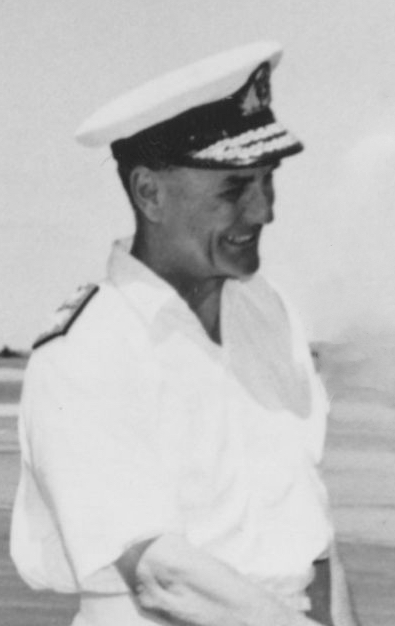Rear Admiral Charles Carr Clark

Charles Carr Clark was born on 21 August 1902 at East Talgai, near Warwick, Queensland, seventh child of George Carr Clark, a grazier from England, and Maria Gertrude, née Clark. Educated at Toowoomba Preparatory School, Charles was a 1916 entrant at the Royal Australian Naval College, Jervis Bay. He graduated in 1919 with an average scholastic record and colours for cricket. Next year he sailed to England in HMS Renown.
While undergoing training with the Royal Navy, Clark was offered voluntary retirement as part of the planned reductions in Australia's armed forces, but decided to remain in the Navy and to specialise in engineering. In 1923-24 he studied at the RN Engineering College, Devonport, played cricket in the first XI and revealed a latent academic ability which won him a place on the Advanced Engineering Course at Greenwich. He returned to Australia in August 1926 and went to sea. On 12 December 1928 he married Margaret Granville Haymen at St Andrew's Anglican Church, Indooroopilly, Brisbane. From November 1929 to June 1932 he was second assistant to the engineer manager, Garden Island Dockyard, Sydney, then again served at sea. While flotilla engineer officer in HMAS Stuart, Clark was promoted Engineer Commander on 31 December 1936.
He went back to Garden Island in January 1938 as First Assistant. Involved in major refits of the cruisers Australia and Adelaide, he was plunged into a hectic round by the outbreak of war: planning Australia's final fitting out and trials, readying the destroyer flotilla for deployment to the Mediterranean, preparing reserve ships for service, arming and equipping merchant vessels, overseeing civilian contractors and supporting visiting troop-ships. On 31 May 1942 the ferry, Kuttabul, which lay alongside the dockyard and provided accommodation for sailors, was struck by a torpedo from a Japanese midget submarine. Accompanied by the engineer manager, Clark immediately boarded and searched the vessel, wading through deep water in dark and hazardous conditions to assist the survivors.
In October 1943 he was posted to HMAS Australia as Engineer Officer. He was present at operations off Cape Gloucester, New Britain (December), Hollandia, Netherlands New Guinea (April 1944), and Morotai Island (September). During the landings at Leyte Island in the Philippines, on 21 October Australia was hit by a Japanese aircraft which dived, apparently deliberately, into the foremast above the bridge. The crash occasioned damage, casualties and fires. Clark left his action station in the forward engine-room to direct fire- and damage-control parties in the bridge area; his deeds led to his being appointed as an Officer in the Order of the British Empire (OBE). Between 6 and 9 January 1945 at Lingayen Gulf, Luzon Island, Australia survived five kamikaze attacks. For his actions throughout those days, Clark was awarded the Distinguished Service Cross (DSC).
On 5 November he was promoted Acting Engineer Captain (confirmed 31 December 1946) and appointed General Manager, HMA Naval Dockyard, Williamstown, Melbourne. He headed an active ship-building and refitting program. In 1950-52 he was Naval Engineer Officer on the staff of the Australian High Commissioner, London. Posted to Navy Office, Melbourne, in September 1953 he was promoted Engineer Rear Admiral, and appointed third naval member of the Naval Board and chief of construction. During his tenure he was responsible for the building of the Daring Class destroyers. Although he fought hard to have four ships built, he was obliged to accept a political decision to reduce the number to three. He began the follow-on type-12 frigate construction program and advocated the production in Australia of auxiliary machinery for these ships. Later, he initiated development of the Ikara anti-submarine weapon system. As a member of the Australian Shipbuilding Board, he ensured that the design of certain merchant ships embodied naval requirements. Clark was dedicated to naval technical excellence. Appointed as a Companion of the Order of the bath (CB) in 1958, he retired on 21 August 1959 to a grazing property near Seymour, Victoria.
Clark was a director (from 1959) of Broken Hill Proprietary Co Ltd and a board-member of Commonwealth Aircraft Corporation Pty Ltd. He was a member (1946) of the Institution of Engineers, Australia, and the Institute of Marine Engineers, London, and vice-president (1964) of the Naval Association of Australia. Survived by his wife, two sons and two daughters, he died of lymphosarcoma on 29 January 1965 at Richmond, Melbourne.


